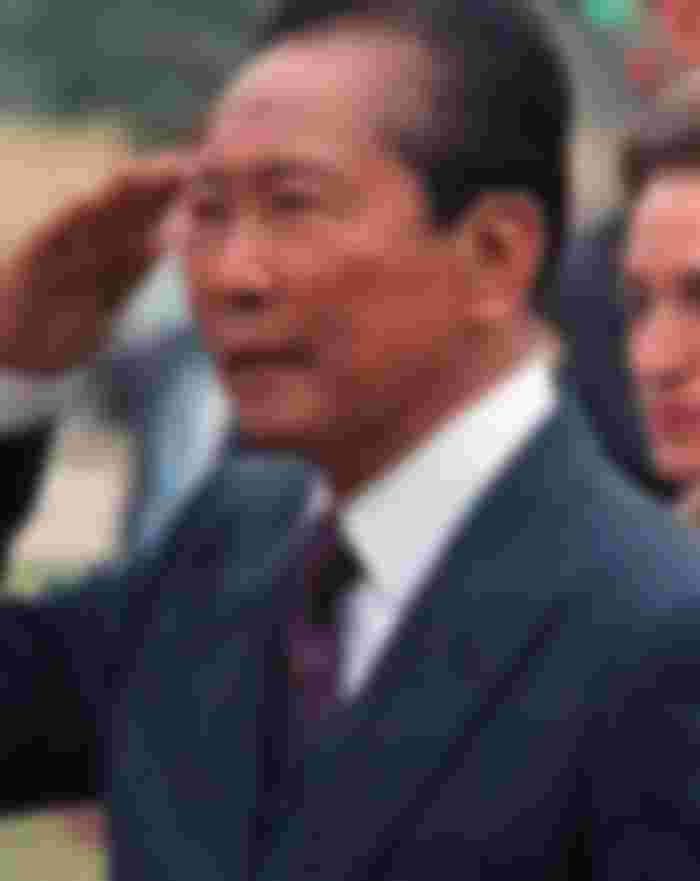1965-1986 (the leadership of Ferdinand Marcos)

Years of mismanagement of the economy, chronic corruption and changing political conditions during the Ferdinand Marcos regime from 1965 to 1986 contributed to the slow development of the Philippine economy. [6] Under Ferdinand Marcos when the Philippine economy was the first to experience negative growth since 1984. [7] Inflation is at 65%. [7]
The official exchange rate for the dollar in 1965 was 3.90 pesos per dollar [8] but dropped to 19,030 dollars in 1985 [8] and 20.53 pesos per dollar when Mark was ousted in 1986. [8] [7] According to some sources, the annual GDP growth of the Philippines from 1976 to 1986 under the leadership of Marcos was only 1.8%. [9] The Philippine economy was plunged into an economic crisis in the 1970s over Marcos' alleged spending of government funds during his re-election as President. [10] Since the Marcos administration could not repay the country's foreign debt, he arranged to reduce the peso to ₱ 6.40 per US dollar. During the 1970s, the world's general increase in raw material prices helped the economy.

Manufacturing maintained a 6 percent growth rate in the late 1960s but was low on the economy as a whole. Exports of products have also grown. The public sector played a bigger role in the economy in the 1970s because of government spending on the GNP of about 40 percent. To support the economy, Mark heavily indebted to foreigners. [10] When Marcos became President in 1965, Philippine foreign debt was less than two billion dollars.
When Marcos was ousted in February 1986, Philippine foreign debt amounted to 28 billion dollars. Currently, the Philippine government is still paying interest on the country's foreign debt incurred during the Marcos administration until 2025. [11] According to reports, 33% of foreign debt equivalent to 8 billion dollars went to the pocket of Mark and his cronies. [12] In implementing the New Society, Marcos confiscated the businesses of "Chinese and Spanish oligarchs" but these also went to members of the Marcos family and close friends who became the new oligarchy. [13] [14] Under Martial Law, the Marcos government made it national or owned by private big corporations such as PLDT, PAL (Philippine Airlines), Meralco, Fortune Tobacco, San Miguel Corporation and others. properties of the Marc family. [14] [15] PAL or Philippine Airlines is said to have created a virtual private commuter line for Imelda Marcos and her friends for their flights to New York and Europe. [16] Marcos and his cronies established "crony capitalism" and monopolies in important industries such as cotton, tobacco, bananas, manufacturing, sugar and more. It is said that Mark's establishment of monopolies has seriously undermined the Philippine economy. [10] Sugar and coconut farmers are only forced to sell their products at the monopoly establishments of Marcos at lower prices than international prices. The military officials put Marcos on the board of corporations and ordered the military to control all public utilities and the media. [14] When Marcos declared Martial Law in 1972, he promised land reform but when he was ousted in February 1986, only 50,000 to 70,000 hectares of land was distributed to small farmers from 10.3 million hectares of private land and from 17 million hectares of public land.In 1975, 57% of Filipino families were reported to be poor. [12] By 1985, 60% of the Philippine population was below the poverty line.




Very wonderful article